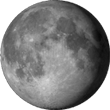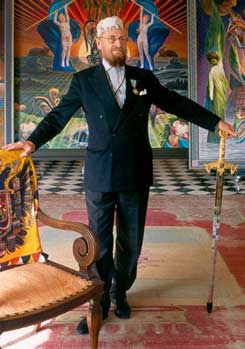
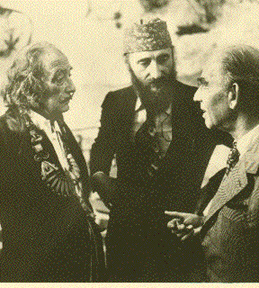
Salvador Dali, Ernst Fuchs and Arno Breker1930 Ernst Fuchs was born on 13 February in Vienna. His father, Maximilian Fuchs, son of an orthodox Jewish family, had turned down a career as a Rabbi, leaving his theological studies uncompleted. He married Leopoldine, a Christian. When the Nazis occupied Austria in March 1938, Maximilian Fuchs emigrated to Shanghai. Ernst remains in Vienna together with his mother. Nazi legislation makes it illegal for Leopoldine to raise her son. Ernst is deported to a transit camp for children of mixed racial origin. Thereupon Leopoldine Fuchs agrees to a formal divorce from her husband, thus saving her son from the extermination camp. 1942 Fuchs is baptised, an event of the utmost significance for him that determines his future life and work. He feels the vocation to become an artist and takes initial lessons in drawing, sculpting and painting with Alois Schiemann, a well-known painter and restorer. Subsequently he receives tuition from Professor Fröhlich and the sculptress Emmy Steinböck. 1945 Study with Professor Albert Paris von Gütersloh at the Vienna Academy of Art. There he encounters the work of Egon Schiele and Gustav Klimt. 1948 Founding of the “Vienna School of Fantastic Realism” together with Arik Brauer, Wolfgang Hutter, Rudolph Hausner and Anton Lehmden. Participation in the first exhibition of the Vienna Art Club in Turin/Italy. 1949 Ernst Fuchs settles in Paris where he remains for 12 years. After many years of misery and poverty he eventually meets with international recognition. 1952-1956 Trips to England, Spain, Italy and an 18-month stay in the USA…1956 Fuchs moves to Israel where he lives in the Dormition Monastery on Mount Zion and paints Icons. He devotes all his energies to furthering Jewish-Christian understanding and to working as a church painter. Fuchs is commissioned to paint the Drei Mysterien des heiligen Rosenkranzes (Three Mysteries of the Sacred Rosary) for a newly-built church in Vienna. His paintings cause a storm of protest. Some of his most vehement detractors demand that the pictures be removed from the church. 1962 Triumphant return to Vienna and subsequent international recognition. Ernst Fuchs opens a gallery that becomes a center and meeting point for the supporters of Fantastic Realism. 1966 Ernst Fuchs writes his book Architectura Caelestis in which he details his artistic concept and fulfils it with architectural designs and models as well as monumental sculptures. 1970 Starts working with bronze, granite, silver and synthetic resin. 1973 Fuchs acquires the Otto Wagner villa in Vienna-Hütteldorf, which he subsequently renovates and completely restructures. 1974-1978 Works for cinema and stage. Fuchs designs stage sets for the opera houses in Hamburg Parsifal and Magic Flute, in Munich Lohengrin and in Vienna Tales of Hoffmann and Josephslegende. Simultaneously he works on a series of water-colour paintings Lohengrin – and on his philosophical essays and poems. 1978 For the first time Ernst Fuchs signs a work Ikarus with his pseudonym Feuer-Fuchs (Fire-Fox). 1980-1988 International exhibitions. Retrospective in Venice.1981-1982 Recording of his songs “Von Jahve” and “Via Dolorosa.” 1988 Opening of the Ernst Fuchs Private Museum, on the occasion of the centenary of the “Villa Wagner”. The artist lives and works in the south of France. 







The Grand Salon1993 The first Ernst Fuchs exhibition in Russia: the most comprehensive retrospective to date in the Russian Museum of St. Petersburg. 1996 Paradiso, monumental painting.World-premiere of The Magic Flute with costumes and decor by Ernst Fuchs. Illustration of the Holy Bible. 1996-1998 Exhibition tour Religion and Myth. 1997 The World’s Biggest Visitor’s Book-project at Berlin Schloßplatz. 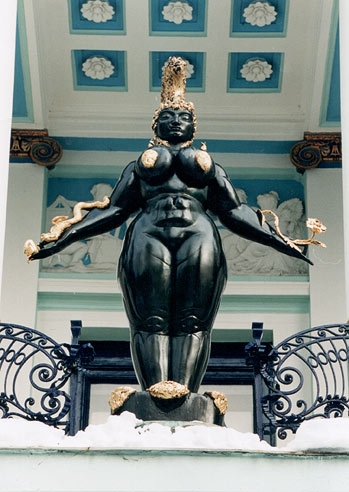
BIG ESTHER, bronze. Height: 263 cm, 1968-72
Mystic Chants, CD The Start, monumental bronze sculpture. Moses Foundation in Wr.Neustadt, Lower Austria. 1998 Opening of the Zodiac Hotel in Carinthia. 1988 -2000 “Man and Machineâ€, monumental compositions’ oil painting, Monte Carlo. 1999 “Myth, Phantasm, Realism†at Citadel, Berlin. 2000 “Venus 2000â€, bronze skulpture “Fantasy Art†at Speicher, Bremen, Germany. 2001 Exhibition at Tretjakov Gallery, Moscow. Retrospective at Palais Harrach, Vienna. 2002 Retrospective “Myth, Phantasm, Realism†at Zeughaus, Augsburg, Germany. Retrospective in Westfries Museum, Hoorn, Holland. 2003 “Die Phantasten†exhibition at Minoritenkloster, Tulln, Austria. Präsentaion of the book “Ernst Fuchs. Zeichnungen und Graphik aus der frühen Schaffensperiodeâ€, Fuchs-Villa, Vienna. 2005 “Paradiso”: Project of a museum for phantastic art. 2006 Exhibition “phantastisches†together with Hundertwasser and Brauer at the Jewish Museum, Vienna. 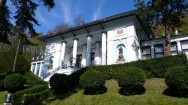
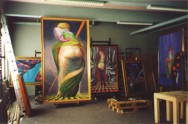
[t] The Villa Wagner I (also: Otto-Wagner-Villa, Ben-Tiber-Villa and (Ernst) Fuchs-house)
is from 1886 until 1888 designed by Otto Wagner built
residential building on the Hüttelbergstraße 26 in the 14th district of Vienna Penzing. The villa is
currently owned by the painter Ernst Fuchs & houses the private museum.
[b] Fuchs Studio History of the Museum Otto Wagner, the famous Jugendstil architect, built a summerhouse for himself and his family in Hütteldorf in 1888, when Hütteldorf was still a suburb of Vienna. The house was inhabited all year round from 1895 until Otto Wagner sold it to the former owner of the Varieté Ronacher, Ben Tiber, in 1911, after Wagner’s children had left home and the house had become too large for him. The Wagner Villa (later called Ben Tiber Villa and today Fuchs Villa) was considered an unusual building from the outset. As reported at the exhibition of the plans in Berlin: “The artist’s villa in Hütteldorf near Vienna has a peculiar attraction. The house, built on a slope and accessed by an imposing staircase, takes the form of an open hall between two wings in complete contrast to other buildings of its type”. Although the building attracted much interest at its conception (and from time to time was the cause of rumour and speculation), it slowly fell into oblivion, as did its architect. The villa stood “decaying with dignity in the garden” until Ernst Fuchs’ initiative to save the building. Originally the rescue of the villa was to be a joint project with the artists Friedensreich Hundertwasser and Arnulf Rainer, a plan which was never put into action. Sometime before Ernst Fuchs discovered the grand old villa, house and garden were made the scene of Heimito von Doderer’s last work, the “Romanfragment No. 7. Der Grenzwald”. “Across the road to the right and on the slope was a house, indeed a palace, of a kind seldom found. The flat roof atop tall and mighty pillars cast transitory shadows. To the left and right projected the wings of the house, whose walls at first sight seem to consist of coloured glass separated by narrow posts”. Much of the villa was restored in the style of Otto Wagner, the rest after designs by Ernst Fuchs. The villa, which served as Fuchs’ atelier for a long time, is no longer lived in. The master moved to southern France after the villa was opened up in 1988 to house the Fuchs collection and to celebrate the villa’s 100th anniversary. In his lavish catalogue of Fuchs’ work, Marcel Brion attempts to grasp the “visionary who sees beyond”, the “chronicler of Unknown worlds”, and to reveal something of the mysticism of Fuchs’ artistic world to its audience. “Not any ancient or modern mysticism but a mysticism of Fuchs” making in which everything plays a special role. Neither born of religion, nor the clever reworking of an academic painter, but rather a mysticism without precedent marrying other mystic stands together; a melting pot of belief and intuition, superstition and liturgy, vision and nightmare, the barely perceptible and the prophetic. A world of its own (a true world?). The artist’s work enlivens and decorate the whole house, from the large-scale pictures, figures and objects created specially for it, to the furniture; from decorative fabrics to the bronze figure of “Queen Esther” on the terrace. All epochs of Fuchs’ creation are represented here. Early pictures can be found alongside new works and future plans like the monumental model of a multi-functional building. The realisation of his own architecture is the last challenge for Ernst Fuchs as a creative artist, as other Austrian artists such as Hundertwasser, Brauer or Kumpf have found. Many visitors discover the villa on one of the so-called “Jugendstil tours”. To offer the visitors something more than the pure attraction of the building, sculptures have been erected in the garden surrounding the house, and, at the entrance to the “Kunstpark”, there is a small gallery for prints, art calendars, books and catalogues.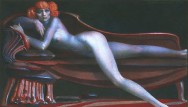 NYMPH GRAMMOPHONE
NYMPH GRAMMOPHONE
(from the Lohengrin Cycle)
1978 Watercolor gouache
27x47cm 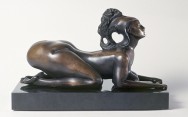 Ernst Fuchs Ur-Sphinx, 1978.
Ernst Fuchs Ur-Sphinx, 1978.
Material: Original Sphinx sand from Giza, Egypt.
Bound with silicates & polished helmet plated with 14 carat gold leaf.
(length: 53 cm, width: 28 cm, Height: approx.48 cm, weight: about 15.5 kg) Socket: acrylic glass (Ernst Fuchs Museum, Vienna) Extensive tours of the house are enjoyed by people from across the world. For those who wish to come again, the house can be rented for small occasions and cocktail parties, possibly in the company of Fuchs himself, as once Ben Tiber might have entertained. For admirers of Fuchs’ work, a catalogue of his art is available at the villa. www.ernstfuchs-zentrum.com
 sonn
sonn
son on facebook
son on twitter
sonn on tumblr
son on computerlove
 aa
aa
aa on vimeo
aa on facebook
aa on twitter


